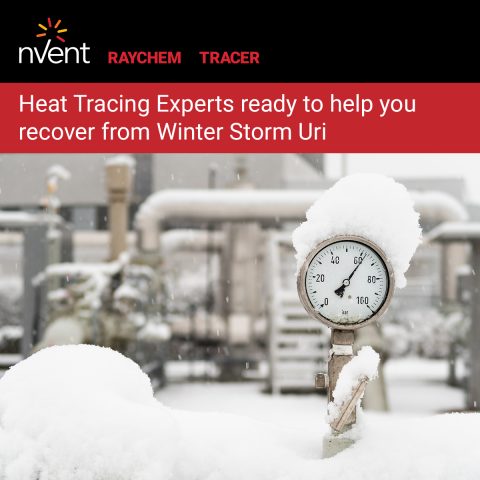During an unexpected cold freeze, a lot of things can happen within industrial power plants. The US South East just experienced such an event that shutdown power to millions of residents and numerous businesses. This region is not used to a winter event like this every year, thus the need to winterize these facilities may not be on top of mind.
The New York Times recently reported that the bulk of the power loss in Texas came from natural gas suppliers (according to regulators) as pipelines froze, making it difficult for plants to get the fuel they needed. Production from coal and nuclear plants dropped as well.
But what can be done to avoid problems occurring if winter weather strikes again?
Why Do Power Plants Freeze During Winter?
Even if a one-time winter freeze event in a warmer region is extremely rare, a plant shutdown that cuts power to millions of people is not an option. Many of the electricity-generating power plants, such as natural gas or coal, have processes and equipment that are vulnerable to freezing if not properly maintained and winterized. Examples of critical systems include a Heat Recovery Steam Generator (HRSG) system and other piping systems where there are various water lines; boiler feed water, service and potable water, high/low pressure steam lines and condensate systems that need to keep running. Other examples of potential areas of failure include the instrumentation equipment with poor insulated systems and improper use of blankets on instruments.
All these applications require a properly installed Heat Management System (HMS) which provides pipe tracing, winterization of instrument/analyzer tubing bundles and heated instrument enclosures to continue to operate efficiently.
What Makes Up A Complete Heat Management System?
A Heat Management System (HMS) is an engineered system designed to maintain or protect process piping, equipment, vessels and instrumentation at pre-determined temperatures and within defined design criteria. A complete heat management system includes the following components:
- Heat Delivery System such as electric heat tracing (self-regulating or Mineral Insulated (MI) technology)
- Control & Monitoring System of the heat delivery system.
- Utility Distribution System
- Thermal Insulation System installed over the heat delivery system
- Instrument Winterization in the form of pre-packaged instrument enclosures and pre-traced/pre-insulated tube bundles.
Don’t take that chance in thinking your facility will not be affected by winter storms or colder conditions. It is important to have a preventive maintenance program in place all year round. Review your systems, equipment, and processes, and identify vulnerabilities and limitations that need to be addressed.
nVent RAYCHEM and nVent TRACER are experts at optimizing and maintaining heat tracing systems. Contact us for a Heat Management System Audit to ensure your facility is properly inspected and performing as it should. We have set up a free hot line to address all your winterization needs. Connect with one of our experts today.


